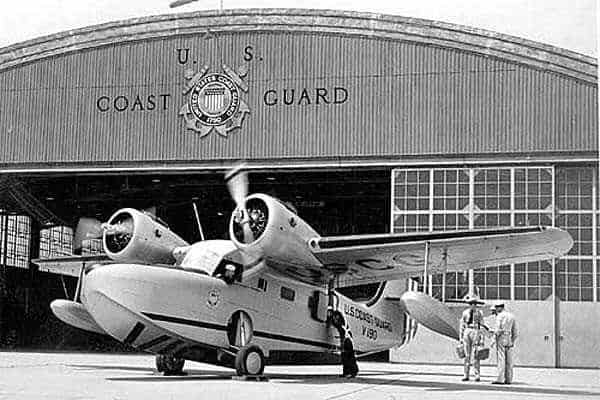Grumman developed the G-21 Goose as a civilian transport aircraft designed to meet the needs of wealthy business organizations. It was put on the market in 1937. The Goose was a high wing monoplane amphibian with a two step hull. It was powered by two Pratt & Whitney Wasp Jr. radial engines mounted on the wing leading edge forward of the cabin. The engines were fitted with collector rings exiting above the wings to reduce noise in the cabin. Positions for two pilots were provided in a cockpit forward of the wings and accommodations for four to six passengers were provided in the cabin below the wing. An entrance door was located on the port side just aft of the cabin. Baggage storage compartments were provided aft of the cabin and in the bow of the aircraft.

The aircraft had hand cranked landing gear. The main gear retracted upward into the side of the fuselage and a steerable tailwheel retracted into the hull behind the second step. The wing floats could be removed, if desired, for land operation and the airplane could be equipped with skis for winter operation.
The Navy began acquiring the G-26 version in 1938 and designated them as JRF, Seven G-39 design aircraft designated JRF-2, built to Coast Guard specifications, and were purchased by the Coast Guard in 1939 and 1940. Three additional JRF-3s were purchased in 1940. The JRF-3 had deicing boots on the leading edges of the wings and tail surfaces. In addition to utilizing these aircraft for transports and utility purposes the Coast Guard saw their value as search and rescue aircraft. All were fitted with electric starters; automatic pilots; and were capable of carrying a single-lens aerial mapping camera.
Beginning in 1941 Grumman commenced delivery of the G-38 design JRF-5. The Coast Guard Acquired 24 of the G-38 model, designated JRF-5G, beginning in 1941. Some of these were US Navy aircraft transferred for Coast Guard operations and retained their BUAER numbers. The JRF-5 engines were Pratt & Whitney R-985-AN-6 radials.
Prior to World War II these aircraft carried out search and rescue as well as aerial mapping flights and participated in the Coast Guard’s contribution to the enforcement of the Neutrality Patrol. During the war, the JRFs conducted search and rescue operations, transported supplies and personnel and were utilized for ASW operations. Depth Charges or Bombs were carried externally under the wing.
Most of the remaining Coast Guard’s JRF-2/3s were disposed of shortly after the end of World War II while many of the JRF-5Gs remained in service with the Coast Guard until 1954.
| Manufacturer | Grumman Aircraft Engineering Corporation, Bethpage, Long Island, NY |
| Designation | JRF-2; JRF-3; JRF-5G |
| Aircraft Type | Amphibian |
| Wing Span | 49′ |
| Height | 16′ 2″ |
| Length | 38′ 6″ |
| Fuel Capacity | 220 gallons |
| Top Speed | 201 mph @ 5,000′ |
| Cruising Speed | 191 mph @ 5,000′ |
| Stall Speed | 65 mph |
| Initial Climb | 1,300 fpm at sea-level |
| Range | 640 statute miles |
| Empty Weight | 5,425 lbs |
| Gross Weight | 8,000 lbs |
| Crew | 2/3 |
| Service Ceiling | 21,300′ |
| Engines | 2 — P&W R-985-AN6 Engines Hamilton Standard 2D30-235 Props |
